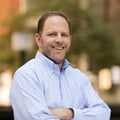Strategic planning is one of those activities most nonprofit leaders know is important, but don’t always make the time for. Let’s face it – with limited resources, you often have to decide whether to put out today’s fires or plan for the future. We’ve all been there. Most of the time we need to, and do, put out the fires.
If you have that nagging feeling that the future should be getting more of your attention these days, you’re probably right. As you weigh the benefits of going down the strategic planning road sooner rather than later, it’s worth looking at some of the benefits your organization will derive from the strategic planning process.
Benefits of Strategic Planning
1. Allows You to Control Your Organization’s Future
Following a well-documented strategic plan will help you be proactive instead of reactive. You can only do this if you have a plan in place. While you’ll still have fires to put out along the way, your strategic plan offers a clear direction for the organization and can be a roadmap to keep you on course.
2. Improves Your Stakeholders’ Understanding of the Organization’s Mission and Capabilities
Everyone who is involved in the strategic planning process will gain insight into your organization’s mission and capabilities. You will be able to answer questions like, Do we have the right people on board to fulfill our mission? and Do we need to expand our capabilities in order to execute our strategic plan?
3. Encourages Wise Business Decisions
Your strategic plan will identify the core areas that are critical for accomplishing your organization’s mission. When there is a clear understanding of what those critical issues are, you’ll know how you and your staff should invest your time and which projects you should invest in.
4. Develops Consensus
Your organization’s future isn’t just about the executive director’s or the board’s strategy. When you involve multiple stakeholders – from the board chair to the membership director to the bookkeeper – in the strategic planning process you’re not only getting fresh ideas, but you’re also gaining buy-in from many people who have a vested interest in your organization.
Be especially wary of “groupthink.” When you have a strong leader at the helm of your organization, there can be a tendency for people to go along with whatever that person thinks and says. By giving others a voice in your organization’s future, you will get everyone on the same page and working toward the same mission, as this case study illustrates.
5. Increases Satisfaction Among Valuable Resources
When you involve people in your organization’s strategic planning process, you are giving them a voice. You want your employees, volunteers and donors to share a passion for your organization and its cause. Involving these valuable resources who aren’t necessarily leaders or decision makers in your organization will help re-energize them, and give them new focus and an increased reason to show up each day.
Need Help?
Whether you’re still on the fence about going down the strategic planning road or ready to get started, our strategic planning experts can help.
Contact us online or call 800.899.4623 to talk over your organization’s situation.


